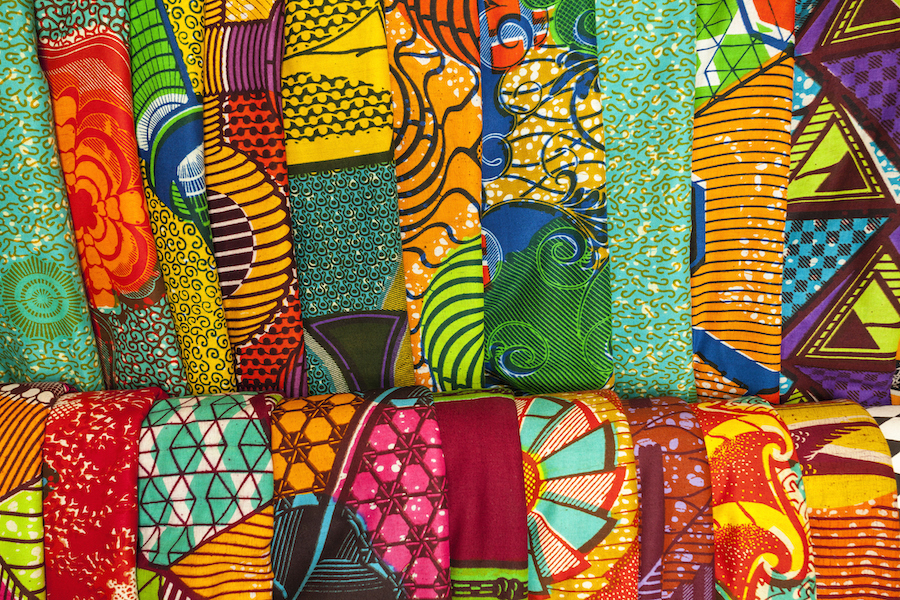Telling the story of COVID-19 through African wax prints
People in different countries have shown different ways of dealing with COVID-19 pandemic lockdowns. In Italy, for example, cities lit up with song as Italians sang out from their balconies. In Ghana, they have taken on a unique way of coping: incorporating it into fashion.
Ghana Textiles Printing has come out with fabrics that incorporate symbols of the current times, “like padlocks, keys and planes to reflect some of the measures implemented to curb the spread of coronavirus,” as well as glasses to represent the president of Ghana, Nana Akufo Addo.
Designers and tailors are also creating face masks using these colorful, vibrant, and bold fabrics.
Across the continent of Africa, wax prints are popular for custom tailored clothes, and often have iconography that represents aspects of a country’s culture and politics. It’s not uncommon to find outfits emblazoned with religious iconography or portraits of politicians.
The history of this African fabric, however, is actually a global one. Wax prints, inspired by Javanese batik, were originally brought by Dutch traders in the nineteenth century and many of the companies that produce them today are still owned largely by Dutch (and, increasingly, Chinese) companies. According to CNN, “The only dynamic wax print company based in Africa is Uniwax in the Ivory Coast.”
However, the origin of African printed fabric doesn’t take away from how they are used across Africa to represent the unique aspects of each country’s heritage, culture, and style. One Ghanaian designer, Belinda Compah-Keyeke, believes that “the print signifies something more than a fashion statement.” To her, “African print is literally our first point of contact to our culture as Africans because when we are born, we are wrapped in a wax print, [. . .] It is a major part of every African's heritage and every wax print tells a unique African story.”
And today, one of those stories told through fabric and clothing is the coronavirus pandemic, and how it is affecting Ghana and the continent at large.
Resources
